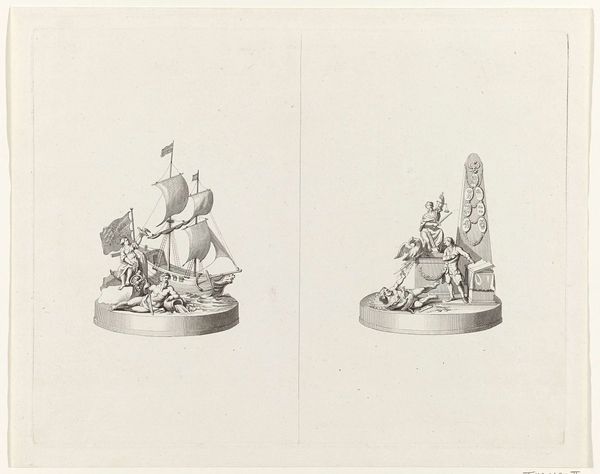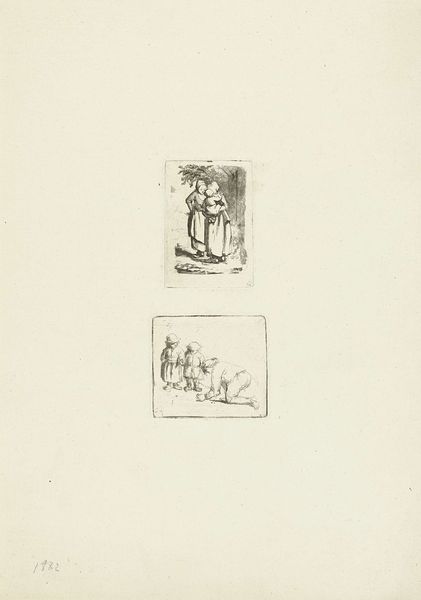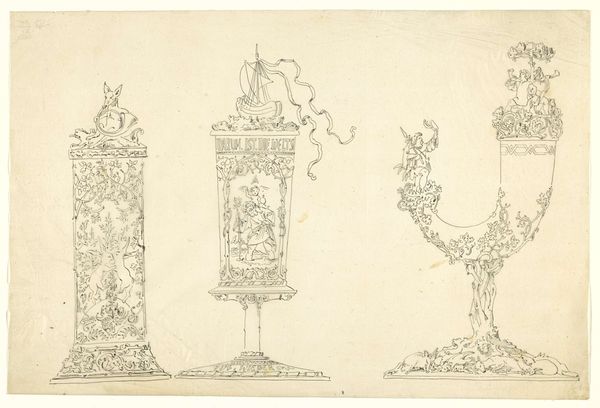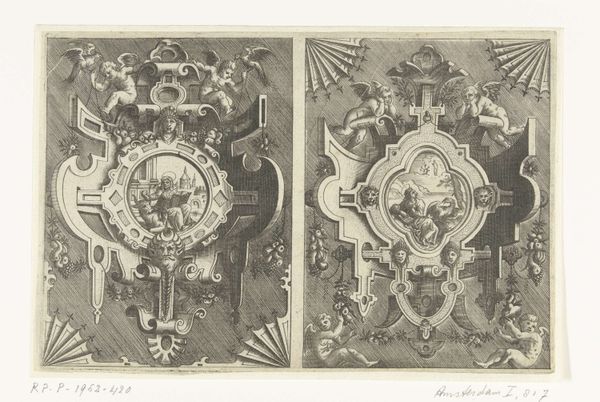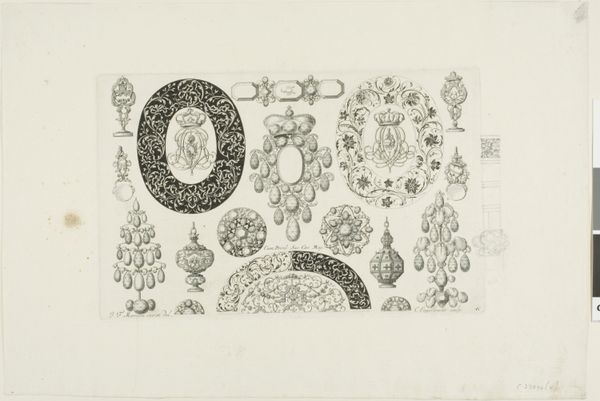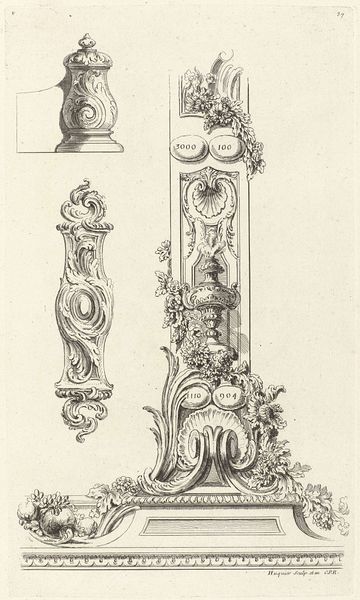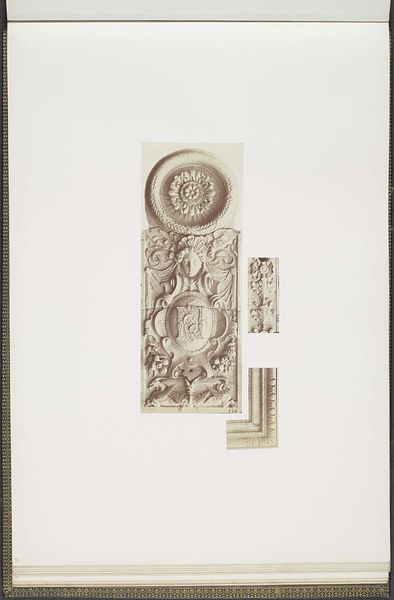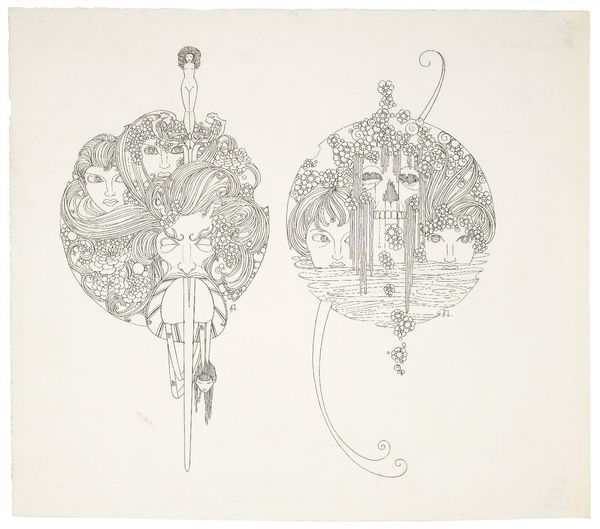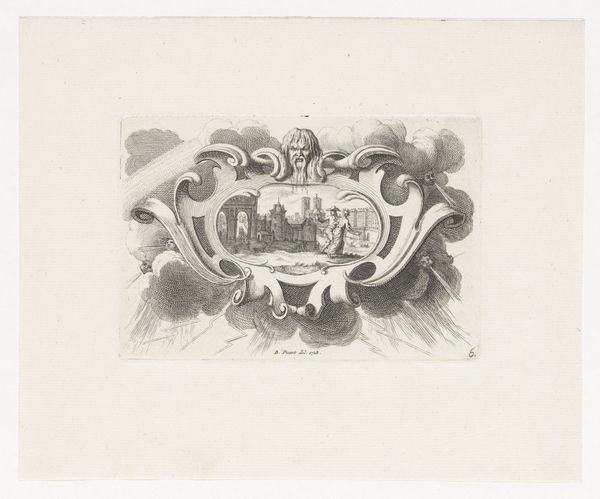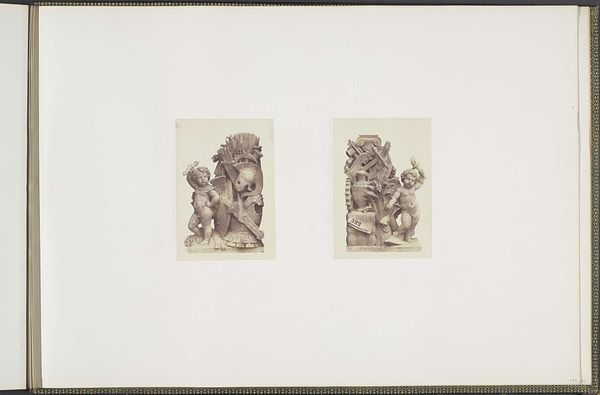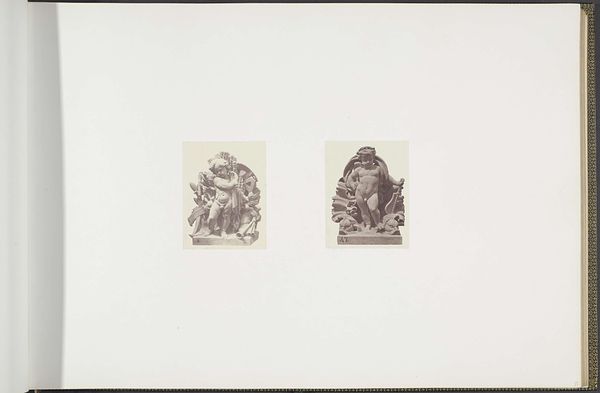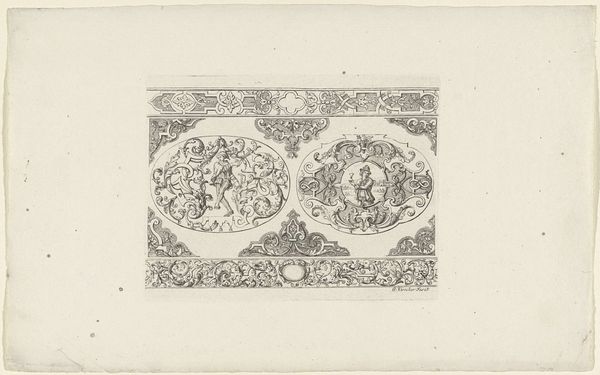
drawing, graphic-art, etching, ink, pen
#
drawing
#
graphic-art
#
neoclacissism
#
ink drawing
#
allegory
#
pen sketch
#
etching
#
ink
#
pen
#
history-painting
Dimensions: height 252 mm, width 322 mm
Copyright: Rijks Museum: Open Domain
Reinier Vinkeles created these two allegorical table decorations in 1786, using etching to create striking contrasts of light and shadow. These designs give us insight into the cultural values and social rituals of the Dutch elite during the late 18th century. Table decorations were more than just ornamentation. They were stages for expressing political allegiances and demonstrating refined taste. The classical motifs, like the columns and allegorical figures, signal a connection to ancient traditions of power and knowledge. The inclusion of globes and what seems to be a caduceus points to the importance of commerce and diplomacy in Dutch society at this time. We can examine period documents like etiquette manuals, merchant ledgers, and political pamphlets to get a clearer picture of the social and political context of these images. Such research emphasizes that meaning isn't intrinsic to the object but emerges from its position within a specific cultural moment. Art historians act as detectives of sorts, piecing together the clues that connect art to its world.
Comments
No comments
Be the first to comment and join the conversation on the ultimate creative platform.
